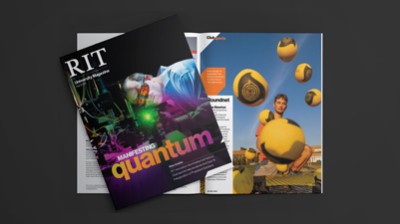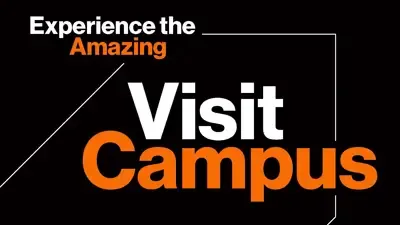Information Technology and Analytics Master of Science Degree

Information Technology and Analytics
Master of Science Degree
- RIT /
- Rochester Institute of Technology /
- Academics /
- Information Technology and Analytics MS
In this applied master’s degree, you’ll study IT systems and Big Data to learn how analysis drives decision-making and innovation.
$95K
Median First-Year Salary of RIT Graduates from this degree
1st
Fastest growing job by 2030: Big Data Specialist
Overview for Information Technology and Analytics MS
STEM-OPT Visa Eligible: The STEM Optional Practical Training (OPT) program allows full-time, on-campus international students on an F-1 student visa to stay and work in the U.S. for up to three years after graduation.
Combine IT and decision making through analytics to address the challenges and opportunities of Big Data.
Leverage the most current data analytics techniques to address and solve industry problems.
Complete the master's of information technology and analytics on-campus or online.
Technology has woven itself into the fabric of society, binding people and information closer together than ever before. This evolving digital era brings with it exciting innovations. It also brings a host of new, unexplored problems that can be unlocked through data analytics. RIT’s master’s of information technology and analytics provides an opportunity for in-depth, career-oriented study that explores how information is understood and leverages the most current data analytics techniques to address industry problems.
The internet has brought a new kind of democracy where all information is created equal. No longer the sole province of experts and the traditional media, it has become grassroots, viral, and global. The sheer volume and lightning speed of information transfer has changed how the world communicates, educates, learns, and ultimately solves problems. As the web and its related technologies evolve, users need help in managing these new tools.
A Growing, In-Demand Field
Demand for information technologists, data scientists, and data-driven decision-makers across all fields now comprise one-third of the data-savvy professional job market. The MS degree in information technology and analytics addresses this demand at the intersection of information technology and data science. With a program rich in analytics and in-depth, career-oriented study, you will explore how information is organized, verified, analyzed, and applied in today's data-rich environment.
An Information Technology Master’s Degree That Combines IT and Analytics
Graduate study in a computing discipline that only focuses on traditional computing approaches is not flexible enough to meet the needs of the real world. New hardware and software tools are continually introduced into the market. IT professionals must have a specific area of expertise, as well as adaptability, to tackle the next new thing. Or, just as often, retrofit available technologies to help users adapt to the latest trends.
RIT’s master’s of information technology and analytics provides an opportunity for in-depth study that prepares you for today’s high-demand computing careers. Companies are drowning in data—structured, semi-structured, and unstructured. Big data is not just high transaction volumes; it is also data in various formats, with high velocity change, and increasing complexity. Information is gleaned from unstructured sources—such as web traffic or social networks—as well as traditional ones; and information delivery must be immediate and on demand.
This degree shares curriculum with the data science master's degree, and is of particular value to professionals in the field of information technology who need to upskill in data science knowledge to handle the huge volumes of data organizations must utilize. In this degree, you will apply critical, analytical thinking to database design, management, and mining.
As the users’ advocate, IT professionals also need the critical thinking skills to problem-solve in a wide variety of computing situations, combined with an understanding of the needs of their audience. Just knowing how technology works is no longer enough. Today, computing professionals need to know how to make it all work.
RIT’s Master’s of Information Technology and Analytics: On-Campus or Online
The master’s of information technology and analytics program addresses the web systems and integration technologies, and the information management and database technology pillars, of the IT academic discipline, along with the additional option of discovery informatics.
Domain Electives–Chosen only by those enrolled in the on-campus option, domain electives are available in: analytics, information management and database technology, or web systems and integration technologies. With permission of the graduate program director, students may select the special topics track to fulfill this requirement. See the graduate program director for more information.
Thesis/Capstone Options–For the on-campus option of the program, students may choose a project or a thesis to build upon their domain of study. The project option requires one additional domain elective. The thesis option does not require an additional elective. The online option consist of a capstone project.
An IT and Analytics Curriculum Packed with High-Demand Skills
In this degree, you will apply critical, analytical thinking to database design, management, and mining.
- Data Analytics: Demand for data analytics skills are growing 82%, and expertise in big data carries a salary premium.
- Data Visualization: Demand for Tableau skills are growing 87%.
- Software and Programming: Demand for these skills is growing 61%.
- SQL: Nearly half of all postings for jobs in this field require advanced SQL skills.
Demand for information technologists, data scientists, and data-driven decision-makers across all fields now comprise one-third of the data-savvy professional job market. The MS degree in information technology and analytics addresses this demand at the intersection of information technology and data science. With a program rich in analytics and in-depth, career-oriented study, you will explore how information is organized, verified, analyzed, and applied in today's data-rich environment.
-
Affordable Now. Valuable for Life.
Earn your master’s degree without the full price tag. With Master Up you can receive a 30% tuition scholarship for an RIT master’s degree.
-
Don't Delay Your Ambitions Until the Fall
This program offers a spring start, which means you can jumpstart your graduate journey and begin your studies this January.
-
Meet us on-campus on February 19
Learn about the programs that interest you. Hear from program faculty, speak with current graduate students, and ask the questions that will help you get one step closer to your career goals.
Careers and Cooperative Education
Typical Job Titles
| Data Analyst | Data Engineer | Full-Stack Software Engineer |
| Web/Mobile Developer | Database Administrator | Data Warehouse Analyst |
| Technical Product Manager |
Cooperative Education
What makes an RIT education exceptional? It’s the ability to complete relevant, hands-on career experience. At the graduate level, and paired with an advanced degree, cooperative education and internships give you the unparalleled credentials that truly set you apart. Learn more about graduate co-op and how it provides you with the career experience employers look for in their next top hires.
Cooperative education is optional but strongly encouraged for graduate students in the MS in information technology and analytics.
Featured Work and Profiles
-
Video: RIT Computing Graduate Students Thrive in Academia and Industry
Learn more about our leading research opportunities and state-of-the-art facilities in this new video.
Read More about Video: RIT Computing Graduate Students Thrive in Academia and Industry -
RIT Grad Drives Global Open Source Initiatives
As a Fedora community architect, Justin W. Flory ’20 (networking and systems administration) wears many hats.
Read More about RIT Grad Drives Global Open Source Initiatives
Curriculum for 2025-2026 for Information Technology and Analytics MS
Current Students: See Curriculum Requirements
Note for online students
The frequency of required and elective course offerings in the online program will vary, semester by semester, and will not always match the information presented here. Online students are advised to seek guidance from the listed program contact when developing their individual program course schedule.
Students are also interested in
Admissions and Financial Aid
This program is available on-campus or online.
On Campus
| Offered | Admit Term(s) | Application Deadline | STEM Designated |
|---|---|---|---|
| Full-time | Fall or Spring | Rolling | Yes |
| Part-time | Fall or Spring | Rolling | No |
Online
| Offered | Admit Term(s) | Application Deadline | STEM Designated |
|---|---|---|---|
| Part-time | Fall | Rolling | No |
Full-time study is 9+ semester credit hours. Part-time study is 1‑8 semester credit hours. International students requiring a visa to study at the RIT Rochester campus must study full‑time.
Application Details
To be considered for admission to the Information Technology and Analytics MS program, candidates must fulfill the following requirements:
- Complete an online graduate application.
- Submit copies of official transcript(s) (in English) of all previously completed undergraduate and graduate course work, including any transfer credit earned.
- Hold a baccalaureate degree (or US equivalent) from an accredited university or college. A minimum cumulative GPA of 3.0 (or equivalent) is recommended.
- Satisfy prerequisite requirements and/or complete bridge courses prior to starting program coursework.
- Submit a current resume or curriculum vitae.
- Submit a personal statement of educational objectives.
- Submit two letters of recommendation.
- Entrance exam requirements: GRE optional for Spring 2026 and Fall 2026 applicants. No minimum score requirement.
- Submit English language test scores (TOEFL, IELTS, PTE Academic, etc.), if required. Details are below.
English Language Test Scores
International applicants whose native language is not English must submit one of the following official English language test scores. Some international applicants may be considered for an English test requirement waiver.
Duolingo (DET): 130
IELTS: 6.5
LanguageCert Academic: 74
PTE Academic: 60
TOEFL: 88
International students below the minimum requirement may be considered for conditional admission. Deaf and hard-of-hearing test takers with significant hearing loss do not need to take the listening and speaking sections for the TOEFL and IELTS. Each program requires balanced sub-scores when determining an applicant’s need for additional English language courses.
How to Apply Start or Manage Your Application
Cost and Financial Aid
An RIT graduate degree is an investment with lifelong returns. Graduate tuition varies by degree, the number of credits taken per semester, and delivery method. View the general cost of attendance or estimate the cost of your graduate degree.
A combination of sources can help fund your graduate degree. Learn how to fund your degree
Additional Information
Prerequisites
It is expected that prospective students will have a background in fundamental information technology concepts including object-oriented programming, website development, database theory and practice, and statistics. Students without the necessary background should complete the prerequisites before applying to the program. However, bridge courses are available to satisfy the prerequisites.
Bridge Courses
Students whose undergraduate preparation or employment experience does not satisfy the prerequisites can make up for these deficiencies by completing prerequisite bridge courses as prescribed by the graduate program director. The bridge courses are not part of the 30-semester credit hours required for the master’s degree. Grades for bridge courses are not included in a student’s GPA if the courses are taken before matriculation; they are included if completed after matriculation. Since bridge programs can be designed in a variety of ways, the graduate program director will assist students in planning and course selection.
Online Degree Information
The information technology and analytics MS program is designed to be completed part-time (one or two courses per term). Full-time options may be available with graduate program director's approval. Time to completion will depend on the student’s individual plan of study, when courses are offered, what electives are selected, and if the student takes a summer course. Advisors work closely with students after admission on course registration. Typically students finish this degree in two years. For specific details about the delivery format and learning experience, contact the program contact listed on this page. RIT does not offer student visas for online study.
Online Tuition Eligibility
The online Information Technology and Analytics MS is a designated online degree program that is billed at a 43% discount from our on-campus rate. View the current online tuition rate.
Online Study Restrictions for Some International Students
Certain countries are subject to comprehensive embargoes under US Export Controls, which prohibit virtually ALL exports, imports, and other transactions without a license or other US Government authorization. Learners from the Crimea region of the Ukraine, Cuba, Iran, North Korea, and Syria may not register for RIT online courses. Nor may individuals on the United States Treasury Department’s list of Specially Designated Nationals or the United States Commerce Department’s table of Deny Orders. By registering for RIT online courses, you represent and warrant that you are not located in, under the control of, or a national or resident of any such country or on any such list.
Accreditation
Related News
-
January 21, 2025

RIT Executive MBA degree program among nation’s best as ranked by ‘U.S. News & World Report’
Rochester Institute of Technology has again been recognized for offering one of the best online programs in the nation. The 2025 U.S. News & World Report Best Online Programs rankings, released this week, listed Saunders College of Business’ online Executive MBA program as No. 11 in the nation for “Best Online MBA Programs.”
-
December 1, 2021

From floppy disks to the cloud
In 2001, the dot-com bubble was bursting and investors had lost confidence in internet companies. Twenty years later, data has become a new currency, and people can access just about anything from their smartphones. Throughout all these changes, Golisano College of Computing and Information Sciences has evolved into the largest college at RIT, with more than 4,600 students this year. Since its creation 20 years ago, GCCIS has awarded more than 14,000 degrees—in a growing number of computing disciplines.
-
October 4, 2021

RIT joins with New York state chapter of HIMSS to help students start careers in healthcare IT management
RIT students hoping to enter the healthcare IT workforce now have a jumpstart, as the university joins with the New York state chapter of the Healthcare Information and Management Systems Society (HIMSS).
Contact
- G Jackson Gagnier
- Assistant Director, Graduate Admissions
- Office of Graduate Admissions
- Enrollment Management
- 585‑475‑6768
- gjgges@rit.edu
- Kristen Shinohara
- Graduate Program Director
- School of Information
- Golisano College of Computing and Information Sciences
- 585‑475‑6197
- kristen.shinohara@rit.edu
School of Information



















